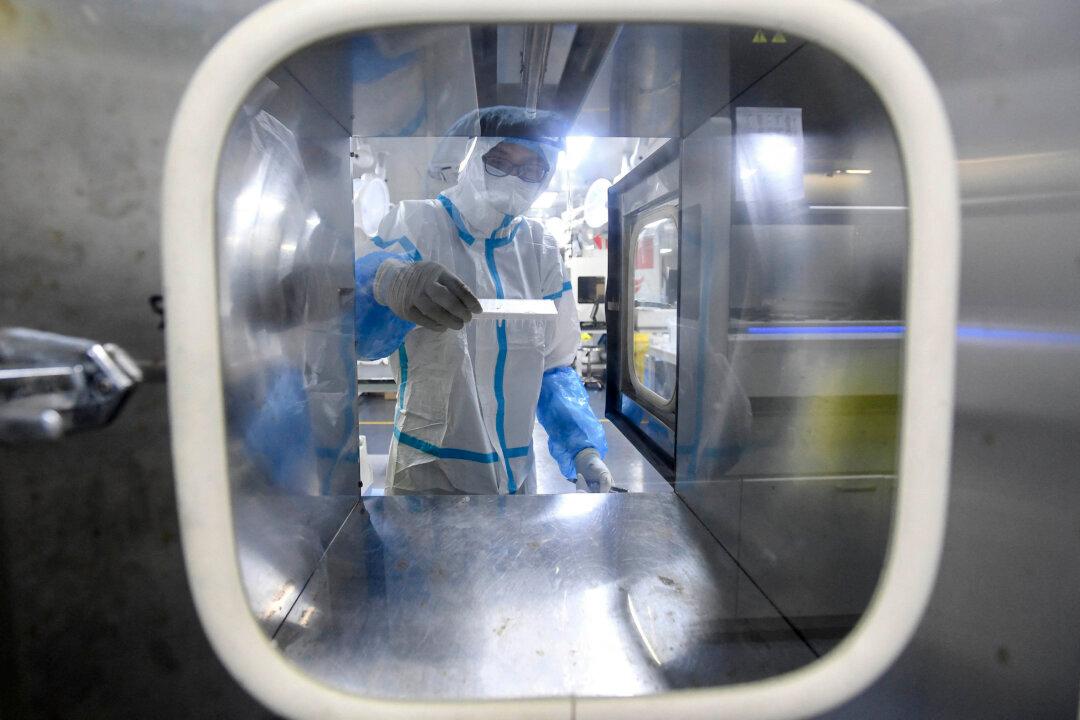On Jan. 28, the Subaru-Asahi Star Camera, which livestreams images from the Subaru Telescope on Hawaii’s Mauna Kea, caught images of a shower of green laser beams lasting just seconds.
The beams were not, as originally thought, from a NASA satellite. They could have come from only one source: China’s Daqi-1/AEMS satellite.
Why was China lasering a dormant volcano on the Big Island of Hawaii?
“I’m not sure, and this is my opinion, why the Chinese—who are probably some of the most prolific polluters on the planet—would be collecting data on pollutants on this side of the Pacific,” Ray L’Heureux, a former chief of staff of Marine Forces Pacific, told the same publication.
Richard Fisher of the Virginia-based International Assessment and Strategy Center can think of a few reasons why Chinese scientists want to know about the atmosphere over Hawaii.
“China’s Daqi-1 satellite, a perfect example of the dual-use nature of China’s space program, utilizes a green laser for environmental or greenhouse gas research, but that data, which provides information about atmospheric density and heavy weather, could also be used to target China’s new hypersonic glide vehicle,” he told Gatestone. “HGVs, as these weapons platforms are called, require precise weather measurements to deliver warheads precisely on target.”
Fisher noted that green lasers can be used to measure seabeds. “It is likely that China,” he said, “has been seeking to develop compact but more powerful green lasers that can conduct underwater surveillance, perhaps anti-submarine and anti-mine missions, from space.”
Jan. 28, perhaps only coincidentally, is the day that China’s now-infamous spy balloon entered Alaskan airspace, in the Aleutians. In its eight-day flight across the United States and Canada, the craft got a good look at two legs of America’s “Nuclear Triad,” its nuclear deterrent force.
The balloon, carrying what appeared to be surveillance equipment, crossed into the lower 48 states on Jan. 31. Before a U.S. Air Force F-22 shot it down on Feb. 4 off Myrtle Beach, the maneuverable balloon surveilled, among other facilities, Malmstrom, F.E. Warren, and Minot Air Force bases, which house all of America’s Minuteman III intercontinental ballistic missiles.
The balloon also passed close to Whiteman Air Force Base, home to the nuclear-capable B-2 bomber fleet, the second leg of the Triad.
Most ominously, the craft flew close by Offutt Air Force Base, the headquarters of Strategic Command, which controls all U.S. nuclear weapons.
This path certainly suggests China is gathering intelligence for either a first or second strike on America’s nukes.
Combined with the green lasers collecting atmospheric data useful for a strike by a hypersonic glide vehicle on Hawaii, American defense planners should be alarmed.
After the spy balloon intrusion, three other “objects” crossed into North American airspace. The origins of these intruders, now also taken down, remain a mystery.
“China is displaying new technology in unconventional ways,” Weichert stated. “This is the start of a much more invasive program of monitoring the U.S. military in order to glean updated capabilities and intentions.”
“The Americans, meanwhile, are completely left behind,” Weichert stated. “Our lack of decisive, coordinated response to these threats—or our willingness to readily cover the events up—further diminished deterrence, as China now believes it can get away with such behavior.”
Deterrence is being eroded as China’s Communist Party is fast mobilizing all society for war. This preparation means, among other things, that it is dangerous to assume that China’s Jan. 28 laser shower was for civilian purposes only.
“No, it’s not a risk to Hawaii or anyplace else, too,” the University of Hawaii’s Roy Gal said.
Yes, nobody on the ground was burned by the green Chinese beams of light on Jan. 28, but the laser shower is another warning that war is on the way.





